My apologies I'm still getting to grips with the more advanced aspects of electronics, so apologies if this is a stupid question!
I'm building a sensor device with a Raspberry Pi, and have got multiple devices connected to it using a breadboard.
I'm having an issue where depending on how fast and which direction I run the connected motor, the brightness/contrast of the connected LCD also changes.
They are both connected to the 5V rail, and being powered off a HW-131 breadboard power module, rather than the Pi.
Here is a link to the video of the behaviour: https://i.stack.imgur.com/IJgwf.jpg
The program running on the Pi in the video runs the motor at a couple of different speeds and different directions, that is intended behaviour, that's not because of these issues. It's the LCD's reaction to it that I'm concerned with here
Attached is a circuit diagram of my circuit. Boxed in red is the Motor circuit, and in blue is the LED screen header, it's running over I2C.
The power supply supplying the board can supply 2A, is it the case that my power supply isn't powerful enough, or could it be some sort of backfeeding issue from the motor driver IC onto the 5V rail?
Any ideas would be greatly appreciated, thanks!
